Your snake plant may be turning yellow due to overwatering, poor drainage, excessive sunlight, nutritional deficiencies, or environmental stress.
Our guide focuses on addressing the issue of yellowing leaves in snake plants (Sansevieria or mother-in-law’s tongue), a common concern for these popular houseplants. We’ll delve into the potential causes and offer practical solutions to revive the plant’s health. This comprehensive guide is designed for both novice and seasoned plant enthusiasts, providing expert advice to maintain the lush, green appearance of your snake plant.
What are Snake Plants?

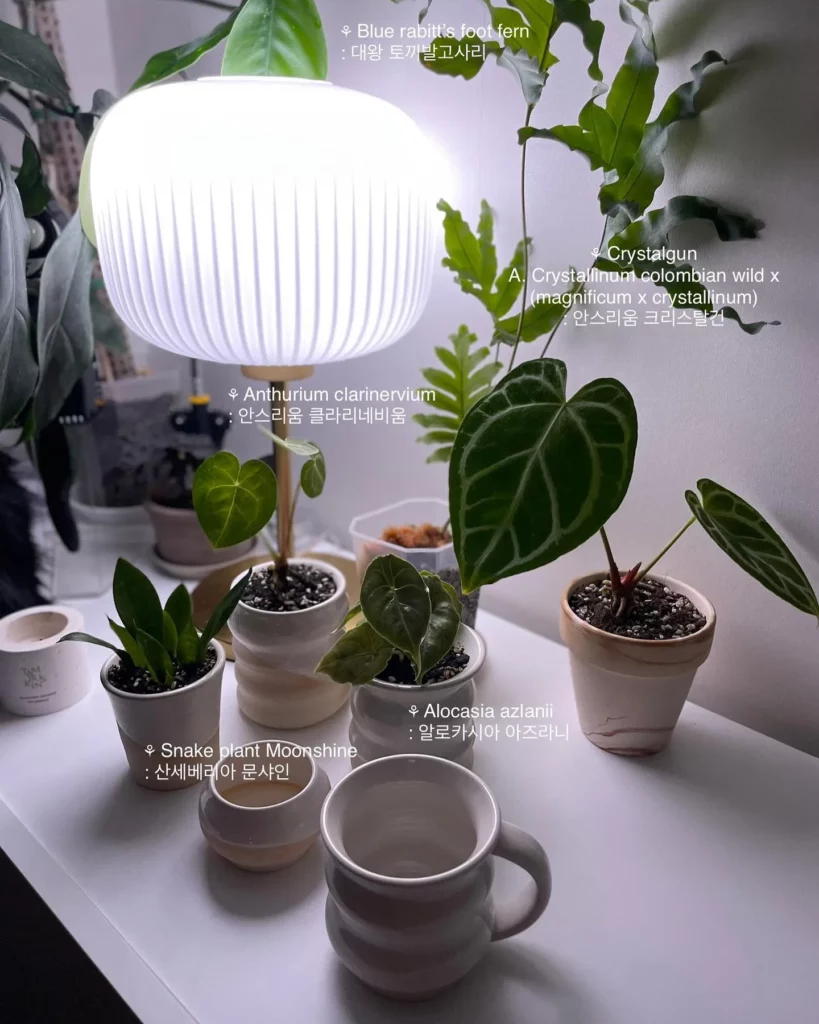

Snake plants, also known as Dracaena trifasciata or Sansevieria trifasciata, are tropical plants native to parts of Africa. They have upright foliage that often features variegations in colors like gold, light green, or gray.
Snake plants are available in various species and cultivars, with some growing compact and others reaching heights of 6 feet or more. They are commonly referred to as “mother-in-law’s tongue” due to the sharp, pointed shape of their leaves.
No products found.
These plants are highly popular as houseplants because of their attractive appearance and low-maintenance nature. Snake plants are well-suited for indoor environments and can tolerate a wide range of light conditions, making them versatile additions to any room.
Their ability to purify the air by removing pollutants such as formaldehyde and xylene also contributes to their popularity. Snake plants are not only aesthetically pleasing but also beneficial for creating a healthy indoor environment.
9 Causes of Yellow Snake Plant Leaves

Yellow snake plant leaves can be concerning, but they often indicate an underlying issue that can be resolved with proper care. Here are 9 common causes of yellow snake plant leaves:
- Overwatering: Excess water can lead to root rot and yellowing of the leaves. Ensure that the soil is well-draining and only water the plant when the top inch of soil is dry.
- Underwatering: Insufficient water can cause the leaves to turn yellow and dry out. Check the soil regularly and water the plant when the top inch of soil feels dry.
- Improper light exposure: Snake plants prefer bright indirect light. Inadequate light can result in yellowing leaves. Move the plant to a location with more suitable lighting conditions.
- Nutrient deficiencies: Lack of essential nutrients like nitrogen, iron, or magnesium can cause yellowing of the leaves. Use a balanced fertilizer specifically formulated for houseplants to provide the necessary nutrients.
- Temperature stress: Extreme temperatures, both hot and cold, can stress the plant and cause yellowing of the leaves. Keep the plant away from drafts and maintain a temperature range of 60-85°F (15-29°C).
- Pest infestations: Common pests like mealybugs or spider mites can damage the plant’s leaves, leading to yellowing. Inspect the plant regularly for signs of pests and take appropriate measures to control them.
- Root issues: Root-bound conditions or root damage can prevent the plant from taking up water and nutrients, resulting in yellow leaves. Repot the plant in a larger container with fresh, well-draining soil if necessary.
- Chemical exposure: Exposure to chemicals like chlorine in tap water can cause leaf discoloration. Consider using filtered or distilled water to avoid chlorine damage.
- Stress: Environmental stressors such as changes in humidity, air quality, or transplant shock can cause the leaves to turn yellow. Create a stable environment for the plant and minimize any sudden changes.
No products found.
Should You Remove Yellow Snake Plant Leaves?
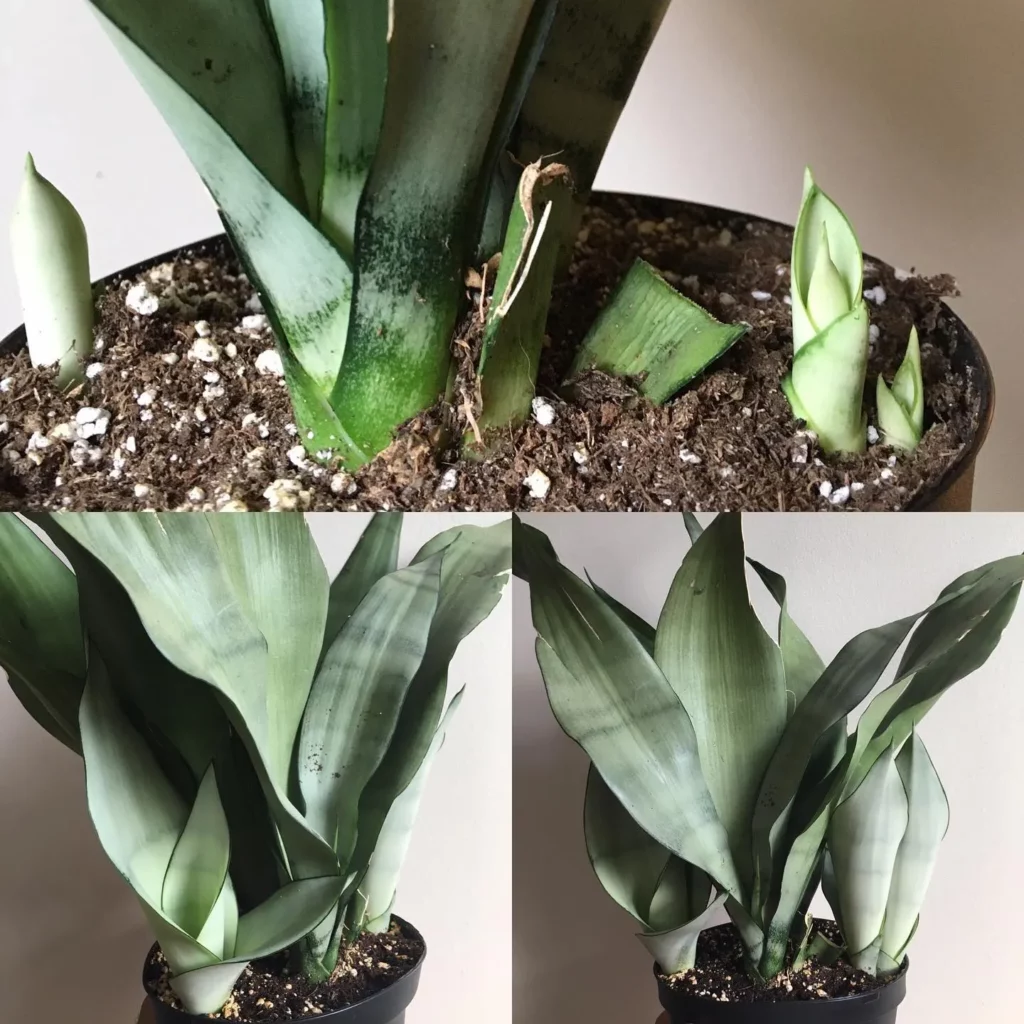
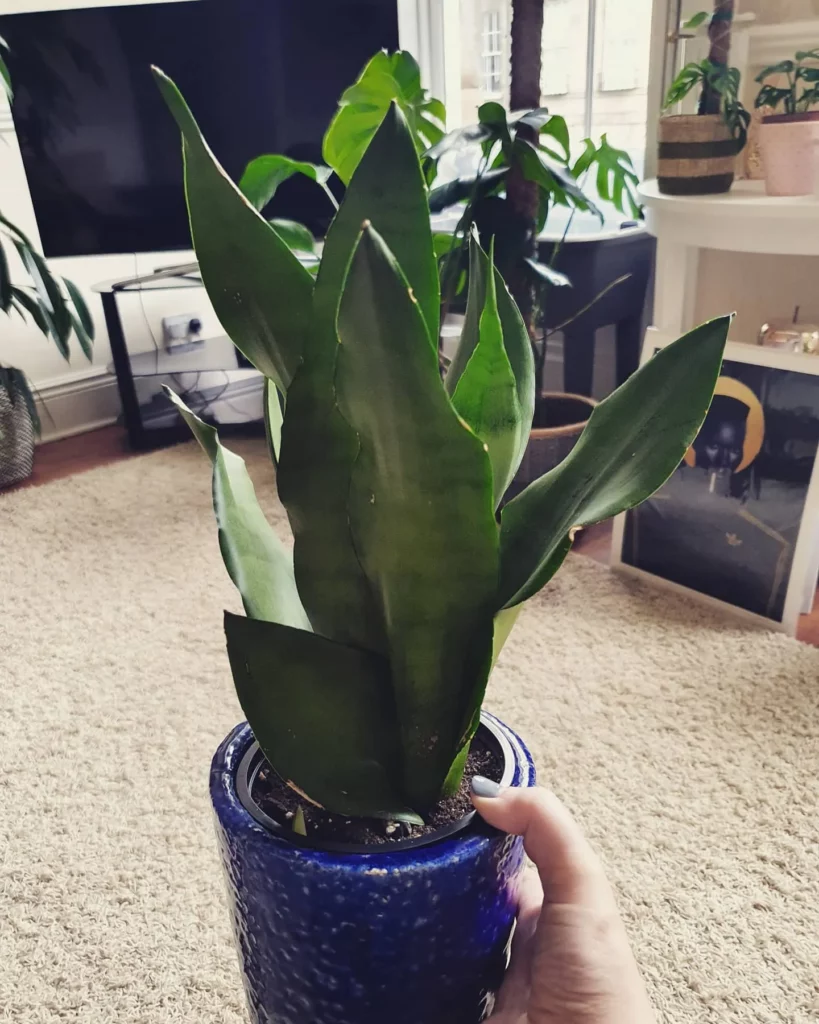
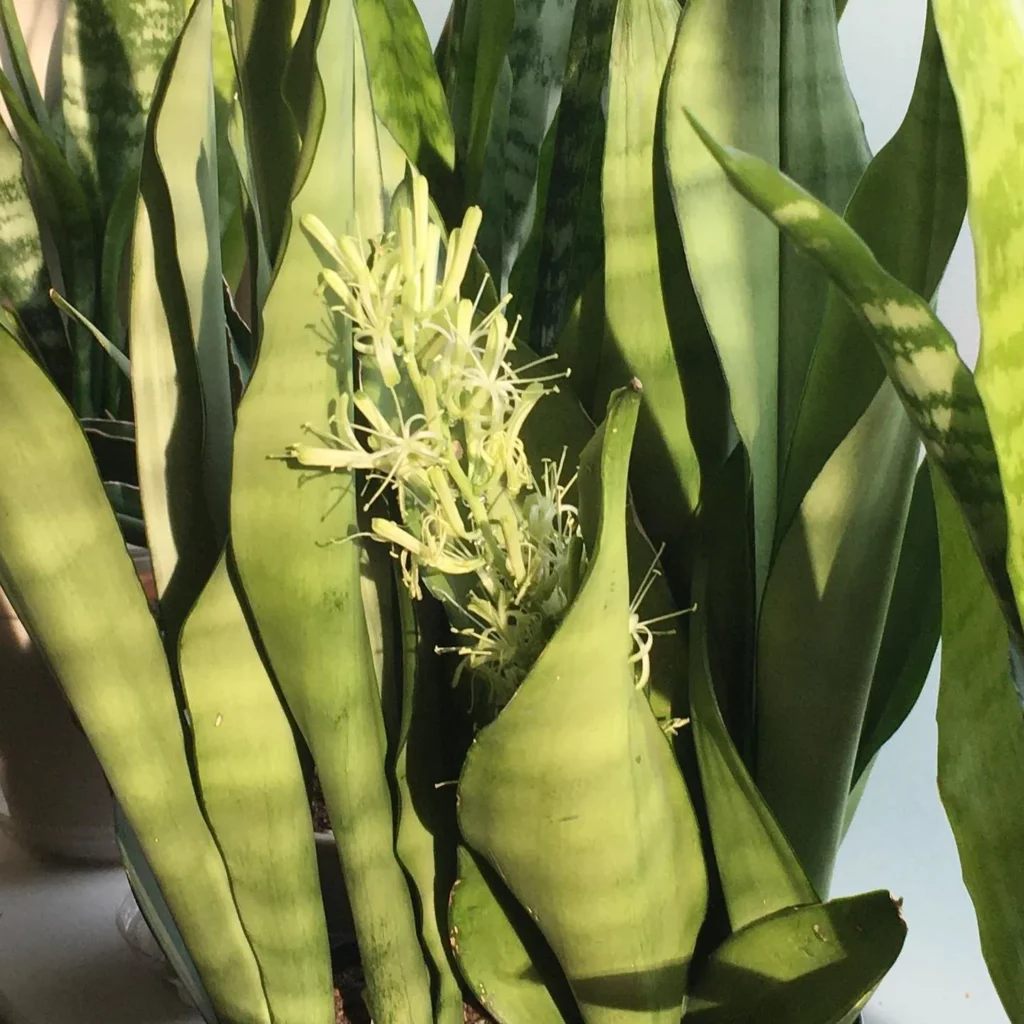
Whether or not to remove yellow snake plant leaves depends on their severity. If the leaves have progressed to bright yellow or brown, it is best to remove them. However, if the yellowing is minor or caused by natural aging, leaving the leaves intact can allow the plant to redirect its energy to new, healthy growth. Cutting off yellow leaves at the base of the plant with sharp, clean tools is recommended.
Removing severely damaged or diseased leaves helps prevent the spread of any issues and promotes healthier growth. Additionally, removing yellow leaves can improve the overall appearance of your snake plant, as vibrant green foliage enhances its visual appeal.
However, it is essential to differentiate between natural leaf yellowing and problematic yellowing. Natural aging will typically result in older leaves turning yellow first, while the newer leaves remain green and healthy. If all the leaves on your snake plant are turning yellow simultaneously, this could indicate a more significant issue that needs attention.
It’s important to assess the overall condition of your snake plant and its remaining healthy leaves when deciding whether to remove yellow foliage. Regular pruning and maintenance will help keep your snake plant looking its best and contribute to its overall well-being.
Preventing Yellow Snake Plant Leaves

Keeping your snake plant leaves healthy and vibrant starts with proper care and maintenance. Follow these care tips to prevent yellowing and ensure your snake plant thrives:
- Provide Adequate Light: Snake plants prefer indirect sunlight but can tolerate low light conditions. Place your snake plant near a window with filtered light or in a well-lit area of your home. Avoid exposing it to direct sunlight, as this can scorch the leaves.
- Water Appropriately: Snake plants are drought-tolerant and prefer dry conditions. Allow the soil to dry out between waterings, and avoid overwatering, which can lead to root rot. Feel the top inch of soil – if it feels dry, it’s time to water.
- Use Well-Draining Soil: Plant your snake plant in a well-draining potting mix specifically formulated for succulents. This helps prevent moisture from sitting in the soil and causing root problems.
- Avoid Excessive Fertilization: Snake plants are low-maintenance and do not require frequent fertilizing. Over-fertilizing can lead to nutrient imbalances and yellowing leaves. Apply a balanced, water-soluble fertilizer diluted to half strength once every few months during the growing season.
- Maintain Optimal Humidity: Snake plants can tolerate average room humidity, but they thrive in slightly higher humidity levels. Consider using a humidifier or placing the plant on a pebble tray filled with water to increase humidity in dry environments.
- Monitor Temperature: Snake plants prefer temperatures between 70-90°F (21-32°C). Avoid exposing them to cold drafts or extreme temperature fluctuations, as this can stress the plant and lead to yellowing leaves.
- Inspect for Pests: Regularly check your snake plant for signs of pests like spider mites or mealybugs. These pests can cause damage and lead to yellowing leaves. If you spot any pests, treat them promptly using an appropriate insecticidal soap or neem oil.
No products found.
Understanding Snake Plant Growth and Maturity

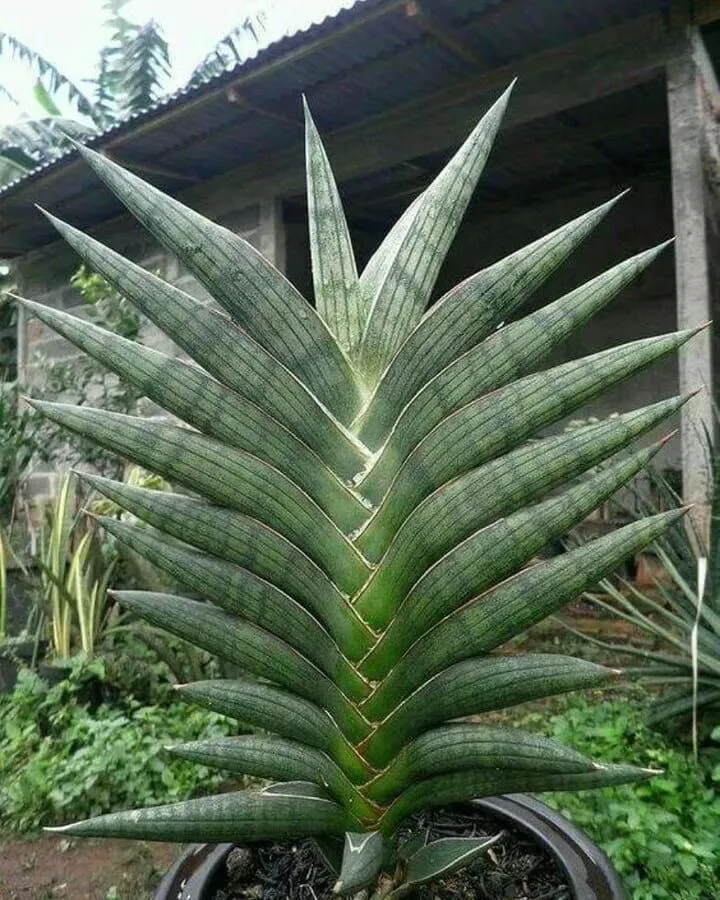

Snake plants are fascinating additions to any indoor space. As slow-growing plants, they require patience as they gradually reach their mature size. It can take several years for snake plants to fully develop, but the wait is well worth it.
One interesting aspect of snake plants is their ability to propagate from leaf cuttings. This means that you can easily create new plants by snipping off a healthy leaf and allowing it to root. In just a few weeks, you’ll start to see new growth emerging from the cutting, a testament to the plant’s incredible resilience and propagation capabilities.
It’s important to note that different snake plant varieties have varying growth rates. Some species stay compact and reach heights of just a few inches, while others can grow up to 3 feet tall. Understanding the growth potential of your specific snake plant variety will help you set realistic expectations and provide appropriate care.
Distinguishing Natural Aging from Problems

Differentiating between natural aging and potential problems in snake plants is crucial. As your snake plant matures, you may notice that older leaves naturally begin to yellow and may eventually die off. This is a normal part of the plant’s life cycle and does not necessarily indicate a problem.
Understanding the natural aging process of snake plants is essential for providing appropriate care. It helps you recognize the difference between normal leaf discoloration and issues such as disease or stress that require intervention.
By allowing the plant to shed its older leaves naturally, you enable it to redirect its energy to new, healthy growth. Removing yellow leaves caused by natural aging is unnecessary and can even hinder the plant’s overall health and vitality.
If you are unsure whether the yellowing of your snake plant leaves is due to natural aging or a problem, carefully assess the overall health of the plant. Look for signs of insect infestation, fungal infections, or other abnormalities. If there are no signs of pests or diseases and the plant is otherwise thriving, it is likely that the yellowing leaves are a result of natural aging.
Snake Plant Leaves Turning Brown



If you notice brown tips or edges on your snake plant leaves, it could be due to various factors that affect its overall health. Inconsistent or improper watering, over-chlorinated water, excessive direct sunlight, cold stress, excess fertilizer, low humidity, or pest infestation can all contribute to browning of snake plant leaves.
To prevent this issue, it is essential to provide proper care and address any underlying problems. Here are some solutions:
- Watering: Ensure consistent watering by allowing the top inch of soil to dry before watering again. Avoid overwatering or underwatering, as both can cause leaf browning.
- Lighting: Place your snake plant in a location with bright, indirect light. Too much direct sunlight can cause the leaves to brown.
- Environmental Conditions: Protect your snake plant from cold drafts or sudden temperature changes, as this can stress the plant and lead to browning leaves. Maintain moderate humidity levels, especially during dry winter months.
- Pest Control: Regularly inspect your snake plant for pests, such as spider mites or mealybugs. If infested, treat the plant with an appropriate insecticide following the manufacturer’s instructions.
- Fertilizer: Avoid over-fertilizing your snake plant, as excess nutrients can accumulate in the soil and cause leaf burning. Follow the recommended fertilization schedule for snake plants.
Snake Plant Leaves Curling

Curling snake plant leaves can be a cause for concern, as they indicate potential issues affecting the health of your plant. Understanding the causes of curling leaves and implementing the appropriate solutions can help restore your snake plant’s vitality and beauty.
No products found.
- Water Problems: Overwatering or underwatering can lead to curling snake plant leaves. Ensure you are providing the right amount of water by allowing the top inch of soil to dry before watering again.
- Pests: Pests like spider mites or mealybugs can cause curling of snake plant leaves. Inspect your plant regularly and treat any infestations promptly using appropriate remedies.
- Excessive Sunlight: Snake plants prefer indirect or moderate light. Exposing them to excessive sunlight can result in leaf curling. Adjust the placement of your plant to provide the right amount of light.
- Root Diseases: Poor drainage, overwatering, or root rot can lead to curling leaves. Ensure your snake plant is potted in well-draining soil and that the pot has proper drainage holes.
- Environmental Stress: High temperatures, extreme cold, or sudden changes in temperature can stress your snake plant and cause leaf curling. Maintain appropriate temperature and humidity levels for your plant’s well-being.
To resolve curling snake plant leaves, take the following steps:
- Check the watering practices and adjust accordingly to avoid overwatering or underwatering.
- Inspect your plant for pests regularly and treat any infestations promptly.
- Ensure your snake plant is placed in an area with suitable lighting conditions, away from direct sunlight if necessary.
- Use well-draining soil and provide proper drainage to prevent root diseases.
- Maintain appropriate temperature and humidity levels to minimize environmental stress.
Snake Plant Leaves Drooping

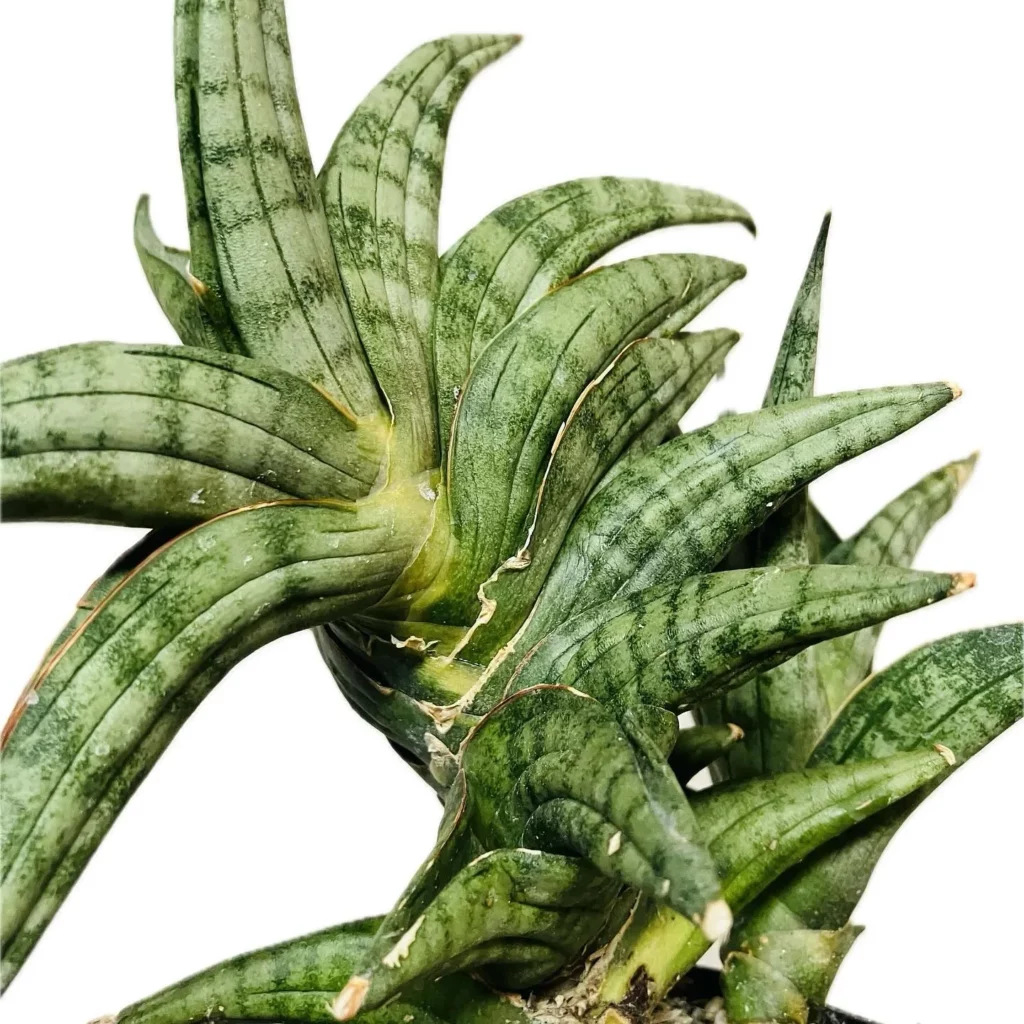

If you notice that your snake plant leaves are drooping, it could be a sign of various issues affecting its health. Drooping snake plant leaves can occur due to:
- Overwatering: Excessive moisture can lead to root rot and cause the leaves to droop.
- Inadequate soil and drainage: Poor soil quality or improper drainage can hinder the plant’s ability to absorb water properly, resulting in drooping leaves.
- Root-bound conditions: When the roots of the snake plant become tightly packed within the pot, they may struggle to absorb water and nutrients, causing the leaves to droop.
- Lack of heat: Snake plants thrive in temperatures between 70-90°F (21-32°C). If the temperature drops too much, it can cause the leaves to droop.
- Poor lighting: Insufficient light or exposure to direct sunlight can also lead to drooping snake plant leaves.
- Pest infestations: Insects and pests like spider mites or mealybugs can damage the plant’s roots or leaves, resulting in drooping foliage.
To alleviate drooping in snake plant leaves, it’s important to address the underlying causes. Here are some potential solutions:
- Adjust watering practices: Allow the soil to dry out slightly between watering sessions to prevent overwatering and root rot.
- Ensure proper soil and drainage: Use well-draining soil and a pot with drainage holes to promote healthy root growth and prevent waterlogged conditions.
- Provide suitable light levels: Place your snake plant in a location with indirect sunlight or provide artificial lighting if needed.
- Address pest issues: Identify and treat any pest infestations promptly using appropriate insecticides or natural methods.
Why Are My Snake Plant Leaves Falling Over?

If you notice your snake plant leaves falling over, it could be an indication of several underlying issues. Common causes of this problem include:
- Overwatering: Excessive moisture can lead to root rot and weak, floppy leaves.
- Inadequate soil and drainage: Poor soil composition or inadequate drainage can hinder root growth and stability.
- Root-bound conditions: When the roots outgrow the pot, they become cramped and unable to support the plant properly.
- Lack of heat: Snake plants prefer warm temperatures and may struggle if subjected to cold drafts or chilly environments.
- Poor lighting: Insufficient light can weaken the plant and cause the leaves to droop.
- Pest infestations: Certain pests, like spider mites or mealybugs, can damage the plant and lead to weakened leaves.
To prevent your snake plant leaves from falling over, it is important to address these underlying issues. Here are some potential solutions:
- Adjust watering practices: Allow the top inch of soil to dry out before watering, and avoid overwatering.
- Repot in well-draining soil: Use a well-draining potting mix to ensure proper water flow and root health.
- Provide suitable heat and light levels: Place your snake plant in a warm area with indirect sunlight or provide artificial light if needed.
- Address pest infestations: Use organic pest control methods or consult a professional if pests are present.
How to Fix Yellow Snake Plant Leaves



Yellow snake plant leaves can be a cause for concern, but with the right troubleshooting tips, you can address the underlying issues and restore your plant to its vibrant green state. Here are some steps you can take to fix yellow snake plant leaves:
- Adjust watering practices: Overwatering or underwatering can both lead to yellowing snake plant leaves. Ensure that you are providing the right amount of water based on the plant’s needs. Allow the soil to dry out slightly between waterings to prevent root rot and yellowing leaves.
- Provide suitable lighting conditions: Snake plants thrive in bright, indirect light. If your plant is receiving too much or too little light, it can result in yellow leaves. Find a location in your home where the plant can get the right amount of light for optimal growth. Avoid placing it in direct sunlight as this can cause leaf burn.
- Fertilize appropriately: Nutrient deficiencies can contribute to yellowing leaves. Use a balanced houseplant fertilizer to provide the necessary nutrients for your snake plant. Follow the instructions on the fertilizer package for application rates and frequency.
- Ensure proper soil drainage: Snake plants prefer well-draining soil to prevent waterlogged roots. If the soil is not draining properly, it can lead to root rot and yellowing leaves. Consider repotting your snake plant in a well-draining soil mix that allows excess water to escape.
- Address pests or diseases: Pests like spider mites or mealybugs can infest snake plants and cause yellowing leaves. Inspect your plant regularly for any signs of pest infestation and take appropriate measures to eliminate them. Additionally, treat any fungal or bacterial diseases promptly to prevent further damage to the plant.
Care Tips for Snake Plants

To ensure the overall health and well-being of your snake plant, follow these care tips:
- Lighting: Place your snake plant in bright, indirect light. It can tolerate low light conditions but thrives in medium to bright light.
- Watering: Allow the soil to dry out between waterings. Overwatering can lead to root rot. Water the plant thoroughly, ensuring excess water drains out of the pot.
- Temperature: Snake plants prefer average room temperatures between 60-85°F (15-29°C). Protect them from drafts and extreme temperature fluctuations.
- Humidity: Snake plants can adapt to different humidity levels but prefer moderate humidity. Mist the leaves occasionally or place the plant near a humidifier.
- Soil: Use well-draining soil specifically formulated for houseplants. Avoid heavy soils that retain excess moisture.
- Fertilization: Feed your snake plant with a balanced houseplant fertilizer during the growing season (spring and summer). Follow the instructions on the fertilizer packaging for proper dosage.
- Pruning: Trim brown or yellowing leaves using clean, sharp scissors or pruning shears. This promotes the overall appearance and health of the plant.
- Pest Control: Check your snake plant regularly for signs of pests like spider mites or mealybugs. If detected, treat the infestation immediately using an organic insecticide or by wiping the leaves with a mild soap solution.
- Propagation: If you want to expand your snake plant collection, propagate them by taking leaf cuttings. Place the cuttings in moist soil or water until roots develop.
Conclusion
Yellow leaves on your snake plant can be an indication of various issues, such as overwatering, underwatering, improper lighting, nutrient deficiencies, or pest infestations. To restore your snake plant’s vibrant green health, it’s essential to understand the potential causes and implement the appropriate solutions.
First, ensure you are watering your snake plant correctly. Overwatering can lead to root rot and yellow leaves, while underwatering can cause dehydration and leaf discoloration. Find a balance by allowing the soil to dry out slightly between waterings and avoiding waterlogging.
Next, pay attention to your snake plant’s lighting needs. While they can tolerate various light conditions, too much direct sunlight can scorch the leaves, while insufficient light can result in weak growth and yellowing. Place your snake plant in a location with bright, indirect light for optimal growth.
In addition to proper watering and lighting, check for nutrient deficiencies and pests. Nutrient deficiencies can manifest as yellow leaves, so consider using a balanced fertilizer formulated for houseplants. Regularly inspect your snake plant for signs of pests, such as spider mites or mealybugs, and take appropriate measures to control their presence.
By addressing these potential issues and providing the necessary care and attention, your snake plant will thrive and continue to enhance the beauty of your indoor space.
FAQ
Why are snake plant leaves turning yellow?
Snake plant leaves may turn yellow due to various reasons such as overwatering, underwatering, improper light exposure, nutrient deficiencies, or pest infestations.
Should I remove yellow snake plant leaves?
It depends on the severity of the yellowing. If the leaves are bright yellow or brown, it is best to remove them. However, if the yellowing is minor or caused by natural aging, leaving the leaves intact can allow the plant to redirect its energy to new, healthy growth.
How can I prevent yellow snake plant leaves?
To prevent yellow snake plant leaves, ensure proper watering practices, provide suitable lighting conditions, avoid over-fertilizing, ensure proper soil drainage, and address any pest or disease issues promptly.
How do I understand snake plant growth and maturity?
Snake plants are slow-growing plants that can take several years to reach their mature size. They can be propagated from leaf cuttings and have different sizes and growth rates depending on the variety.
How do I differentiate natural aging from problems in snake plants?
As snake plants mature, older leaves naturally yellow and may eventually die off. This is a normal part of their life cycle. Differentiating between natural aging and issues like disease or stress can help provide appropriate care for your snake plant.
Why are snake plant leaves turning brown?
Snake plant leaves may turn brown due to factors such as inconsistent or improper watering, over-chlorinated water, excessive direct sunlight, cold stress, excess fertilizer, low humidity, or pest infestation.
What causes snake plant leaves to curl?
Curling snake plant leaves can be caused by water problems, pests, excessive sunlight, root diseases, or environmental stress.
Why are snake plant leaves drooping?
Snake plant leaves may droop due to overwatering, inadequate soil and drainage, root-bound conditions, lack of heat, poor lighting, or pest infestations.
Why are my snake plant leaves falling over?
Snake plant leaves may fall over due to overwatering, inadequate soil and drainage, root-bound conditions, lack of heat, poor lighting, or pest infestations.
How can I fix yellow snake plant leaves?
To fix yellow snake plant leaves, adjust watering practices, provide suitable lighting conditions, fertilize appropriately, ensure proper soil drainage, and address pests or diseases.
What are some care tips for snake plants?
To care for snake plants, provide indirect sunlight, allow the soil to dry between waterings, avoid overwatering, use well-draining soil, and keep the plant away from cold drafts.
How can I restore the health of my snake plant with yellow leaves?
By following the proper care tips, adjusting watering practices, providing suitable lighting conditions, fertilizing appropriately, ensuring proper soil drainage, and addressing pests or diseases, you can restore the health of your snake plant and prevent further yellowing of the leaves.
How do I know when to repot my snake plant?
It is recommended to repot snake plants every 2-3 years or when the roots become crowded and start to outgrow the pot.





